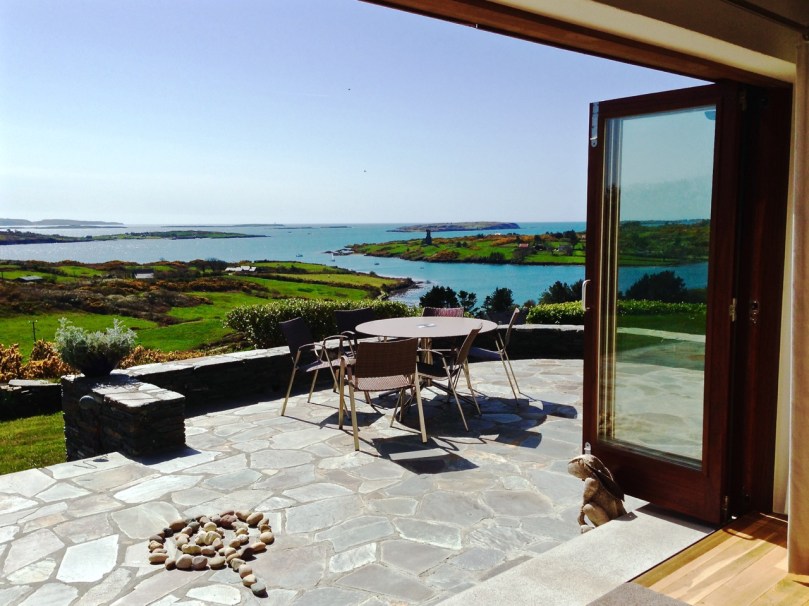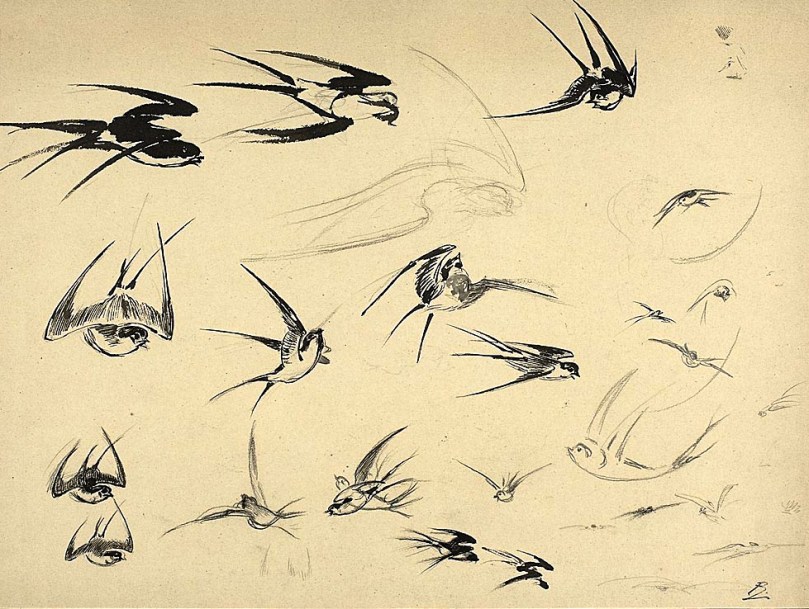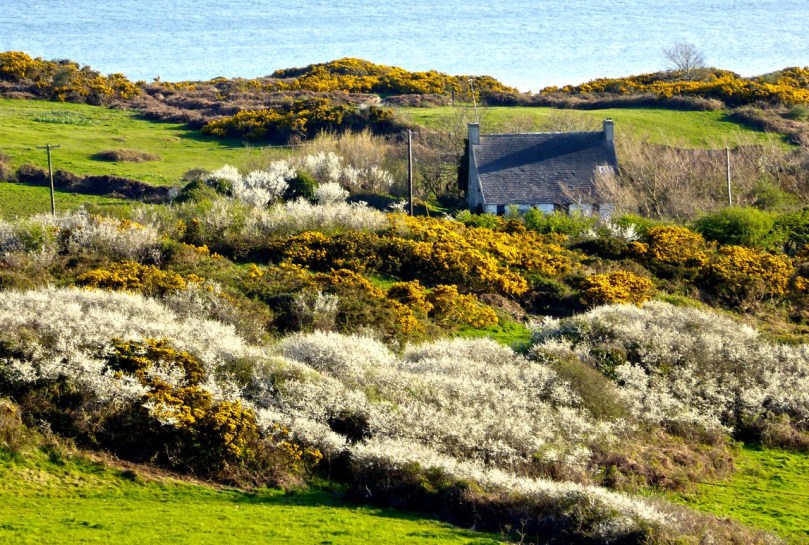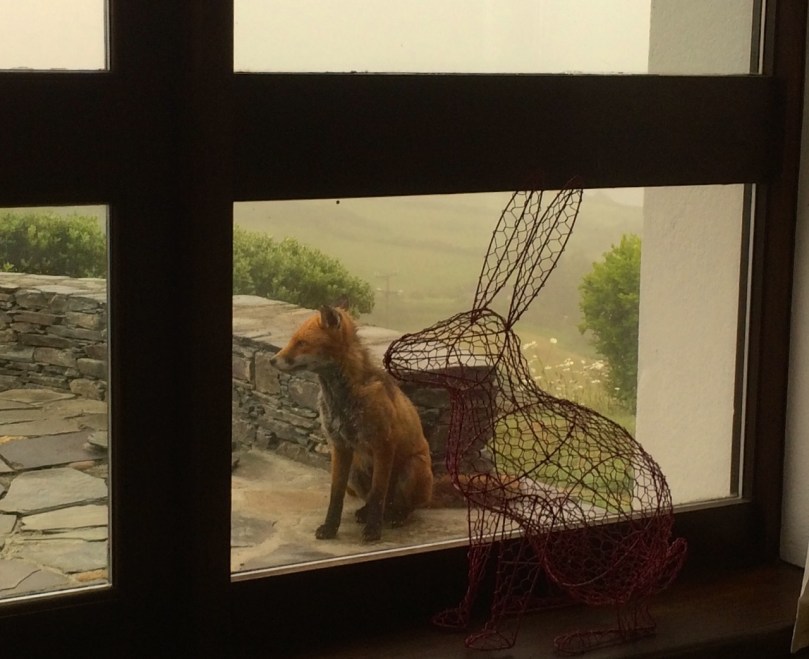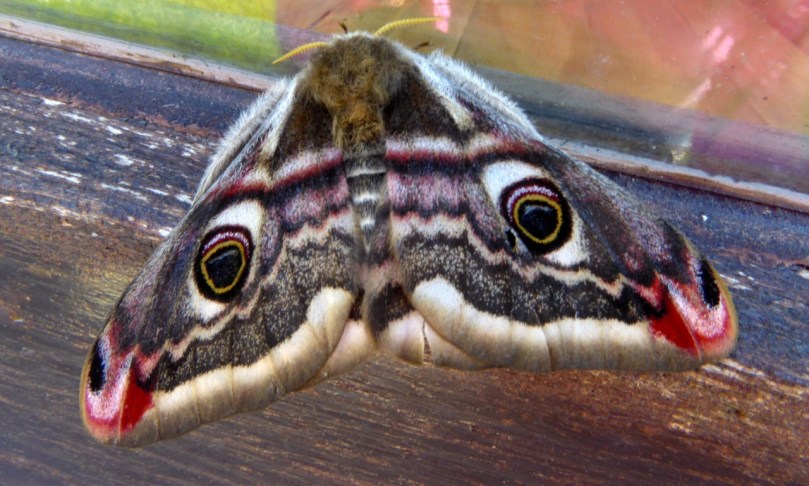A country for hares . . . The idyllic landscape that surrounds us is a haven for Nature in all her moods and varieties, including the human intervention of agriculture (above). Regular non-human visitors to our garden at Nead an Iolair which is, after all, just a slightly tamed piece of the natural landscape, provide a constant source of interest and entertainment, as we have demonstrated in previous posts, including this one.
This summer of 2018 has been exceptionally dry – our usually green sward, and the view beyond (above), turned the colour of straw instead of verdant green. When the rains started a couple of weeks ago it didn’t take long for things to get back to normal (below), and the fresh green shoots of grass attracted an unusual, but most welcome, visitor.
Here he is: Berehert the Hare. He’s young, probably about half adult size, but completely independent. Leverets are born fully developed – furred with open eyes, and lead a mainly solitary life. Hares can run faster than any other European land mammal – an amazing 37 body lengths a second. For comparison, Cheetahs can only manage 23 body lengths per second. It’s their speed that can keep them safe: they can easily outrun a single greyhound but, unfortunately, humankind makes the odds most unfair by setting two or more dogs against them in hunting and coursing which, unbelievably, are legal in Ireland, even though the conservation prospects of the Irish Hare are considered ‘very poor’ under the Berne Convention and EU Directive 92/43 Annex V see page 104. There have been attempts to change this bizarre situation – so far unsuccessful: you might like to tackle your own TD next time there’s an election coming up.
Berehert (have a look here to see where his name comes from) stayed around our garden for three days, and this provided an unprecedented opportunity (for me, anyway) to closely observe the animal’s characteristics and behaviour. In the picture above, where he’s looking a little glum on our terrace in the rain, you can see his wonderful russet colouring and his very long legs, particularly the hind ones. These enable him to take great leaps – fully grown he can jump four and a half metres from a standing start in any direction. This is another protection mechanism: if a hare is approached or surrounded by predators – usually dogs – he’ll wait until they close in on him and then jump that distance and run off. The dogs, which rely on scent more than sight, are completely confused and by the time they sort out where he’s gone, he has (hopefully) vanished.
Fortunately, Nead an Iolair’s resident greyhounds (which came with the house) wouldn’t be much use in the chase: they certainly didn’t seem to deter our visiting hare. Young Berehert did everything which was expected of him while I was watching. He allowed me to get quite close to him – and was perfectly aware that I was there, then suddenly he leapt up and was away, a gangly confusion of legs and ears. But he only went as far as the next patch of new green shoots. Here he is, nibbling away . . .
Hares are restless animals: they don’t stay in one place for very long, and it’s quite normal for them to range over 2km at a time when foraging. Berehert is still out there somewhere, and I’m hoping that he will revisit us occasionally. I’d rather not dwell on the fairly short average life span of hares in the wild (four to nine years) and the fact that only one in five leverets survives their first year. For our continuing education in the natural world of wild West Cork we will have to rely on our more regular and stable visitors: Finnbarr the Pheasant’s family and the myriad of small birds who populate our feeders, not to mention the wide variety of insect life and, in these shortening evenings, the colony of Common Pipistrelle Bats who are busily out hunting: if you think you don’t like bats, just bear in mind that each one can eat around 3,500 small insects, such as midges, in one night.
Thank you, Finola, for all those excellent photographs of Berehert: not the easiest of animals to capture on film!




























